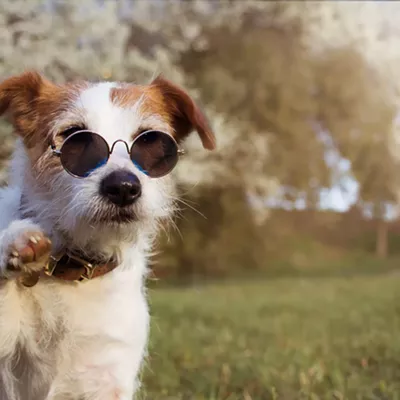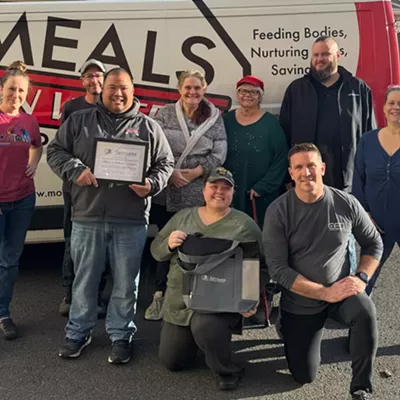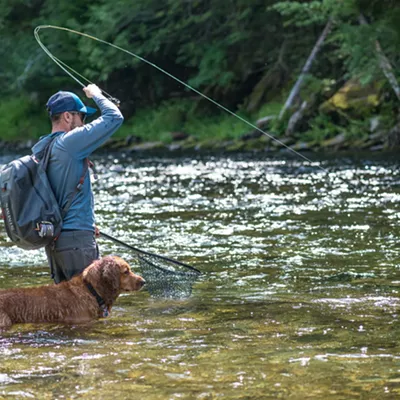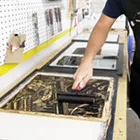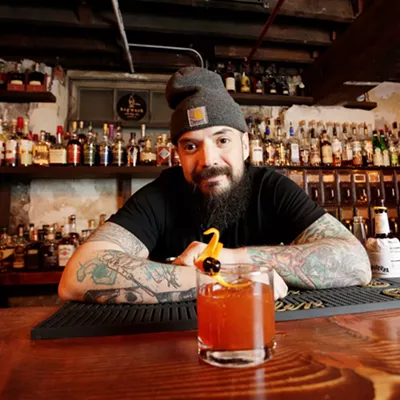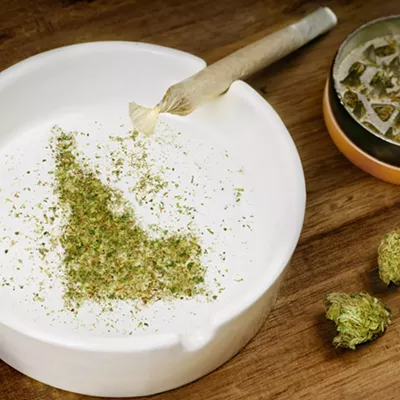When it's time to get some exercise and have a bit of fun, we all have our old standbys. You can go for a jog, down the same streets as last time, or you can shoot hoops with a friend, again. They're standbys because they work, but why not try something new? The Inland Northwest offers many opportunities to play oddball games or get off the beaten path, all while working up a sweat and hopefully cracking a smile.
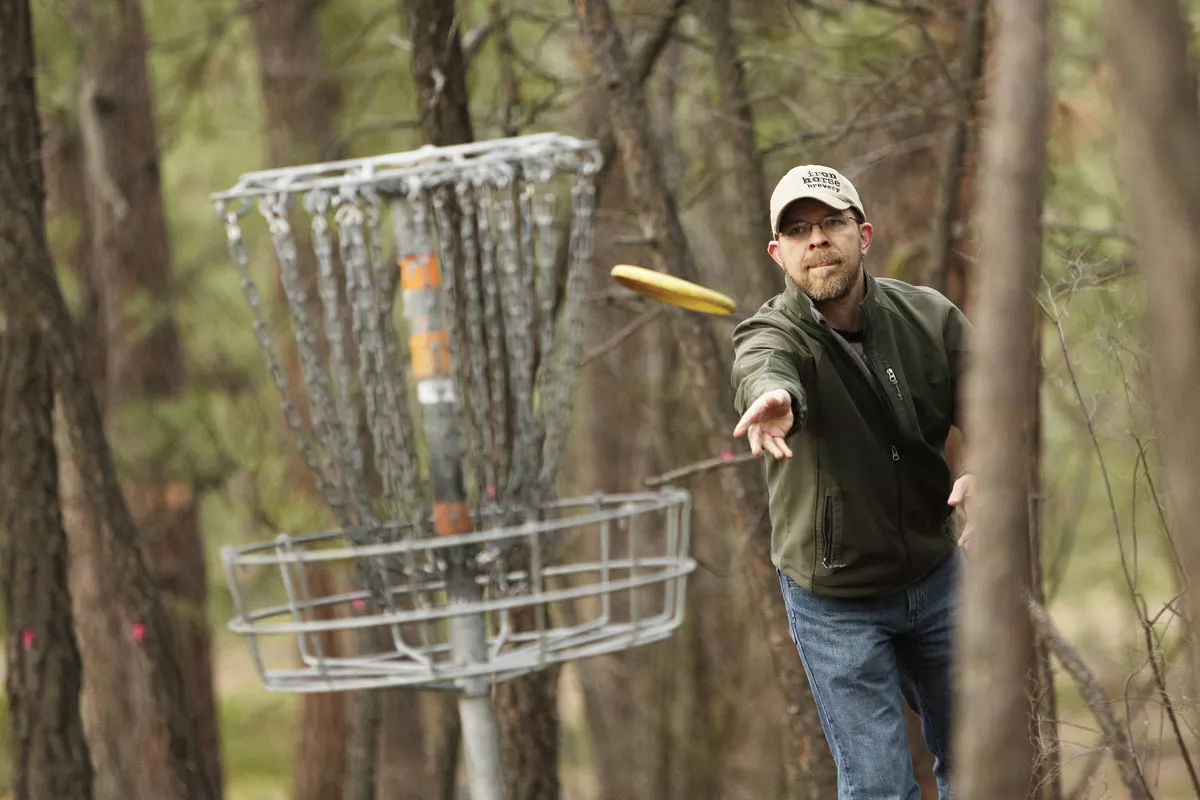
PICKLEBALL
A Pacific Northwest original, pickleball was first played by Joel Pritchard — who went on to serve in Congress and as Washington's lieutenant governor — and his friends on Bainbridge Island in the mid-1960s. In the decades since, it has slowly spread around the country. Now though, it's starting to explode. Thanks, in part, to another group of Northwesterners.
If you followed the Gonzaga Bulldogs this past March, basketball was the No. 1 topic at hand, but pickleball wasn't far behind.
"I can't speak much about the pickleball court," Gonzaga star Corey Kispert said in a press conference during the NCAA Tournament. "That's coach [Mark] Few's realm; he's the pickleball master."
It seemed like a bit of a lighthearted escape from the high-pressure environment of elite college basketball. On one hand, you're picturing the head coach of the top-ranked team in the country hitting a Wiffle ball with a wooden paddle. On the other, if someone at Few's level in the world of sports is playing pickleball, maybe it's not as goofy as it sounds.
"It's great exercise," says Ryan Barbieri, program director at The HUB Sports Center in Liberty Lake.
Pickleball is similar to tennis. Games can be either singles or doubles, and players take turns volleying a ball over a low net. Instead of a tennis ball, though, they use a perforated plastic ball; and instead of a traditional racket, players use what look like oversized ping pong paddles. Additionally, the court is considerably smaller than a tennis court. All of which makes for a game that looks like tennis from afar, but with less power and more back-and-forth action.
"It's definitely grown a lot in our senior community. The population that plays here the most is in that senior age range," says Barbieri. "It's less running, and it's a smaller court to play on, so that definitely helps the senior population, in terms of joint wear and things like that."
Public courts have been popping up around the region in recent years, from Cherry Hill Park in Coeur d'Alene to Sky Prairie Park on the far north side of Spokane and Prairie View Park on the far south side. The HUB Sports Center in Liberty Lake offers clinics, lessons, leagues and drop-in play at their indoor facility.
FUTSAL
It might look like indoor soccer, but futsal is a game all its own.
Born in soccer-obsessed Uruguay nearly 100 years ago, futsal is something of a little brother to the biggest sport in the world. It's smaller in just about every way. The court is smaller, much closer to a basketball court than a soccer field. The goal is smaller, the ball is smaller, and even the teams are smaller, with five players per team — four field players and one goalie.
"On the hardwood the ball rolls faster and it bounces differently," Barbieri says. "So a lot of the teams like to come play futsal to work on their foot skills. It's a lot more foot-skills focused than normal indoor soccer."
Unlike soccer, which sees players running up and down a massive field almost nonstop for the duration of a match, futsal is more of a close quarters situation. Dribbling and technique with the ball at your feet are paramount to the endurance and running skills required in soccer. The long passes and endless runs of soccer are replaced with intricate passing through tight windows and quick bursts of powerful movement.
While it's been around for nearly a century, futsal has, like soccer, been slow to integrate into American sports culture.
"We started futsal probably nine or 10 years ago," Barbieri says. "We do two futsal leagues in the fall and winter, and those are specifically for 8-year-olds through high school. We've tried adults before, but we just haven't had the interest for that."
That doesn't mean Spokane is a futsal wasteland for adults. A few years back Spokane's parks department put a futsal court in under the Maple Street Bridge at Peaceful Valley Park.
FIFA, the organization behind the World Cup, also puts on a Futsal World Cup. The 2021 edition is set to kick off from Latvia on Sept. 12, with the United States' first game scheduled for two days later. Tune in for some highlights and inspiration, before lacing up your shoes and hitting the court.
DISC GOLF
It's not quite a walk in the park, but playing a round of disc golf includes a walk in the park free of charge.
"It's inexpensive. Once you buy a disc for ten dollars, you can play all you want for free," says Steve Simmons, owner of Stimpi Ridge Disc Golf Course and Pro Shop in Spokane.
Unlike its more popular cousin, ball golf, disc golf courses can be nestled into just about any natural setting. There's no need for constant watering and upkeep of greens and fairways, and as a result there are no costs passed on to those looking to play. Around our region there are a few private courses, like Stimpi Ridge, but the vast majority of the courses in the Spokane area are located in public parks. From deep in the woods courses at Farragut State Park and Camp Sekani to the simple and suburban short courses at Whispering Pines and Ben Burr Parks, disc golf in the Inland Northwest can be close to home, or way out in nature if you want to get away.
Disc golf is a great way to get some mild exercise. Each of the three 18-hole courses operated by the City of Spokane are just over a mile in length — there are no golf carts, it's all walking in disc golf. More than just walking, though, the throwing motion engages the entire body from the legs through the core to, of course, the throwing arm.
Beyond just discs, which are different than classic Frisbees and come in various styles like drivers and putters, Simmons recommends a few other pieces of equipment you'll want to bring. Water, to stay hydrated, and a pair of hiking shoes if you're heading to one of the many courses set in a mostly wild, natural environment.
Like ball golf, the objective is to get your disc from a tee pad into a basket with the fewest possible throws. Long drives lead to strategic upshots and ultimately patient putts. Unlike ball golf, there's no stuffy dress code or great commitment required.
"The length is about a third as long as ball golf. You can get it done in one-and-a-half to two hours," Simmons says. "And it's not as frustrating as ball golf. The learning curve is a lot easier."
SPIKEBALL
If you've been to a beach or park on a nice summer day over the past few years, you've no doubt seen a handful of people standing around a miniature trampoline contraption taking turns open-handed slapping a softball-sized ball.
That's spikeball, or roundnet as it's officially but less commonly known — Spikeball, like Frisbee or Kleenex, is a brand name that has become synonymous with the product, or in this case game, as a whole. And it's exploded in popularity over the past decade. The game's origins are in the 1980s, but it wasn't until the late-2000s when Spikeball Inc. began manufacturing and marketing products for the game. The company's founder even appeared on the ABC reality series Shark Tank, where he made a deal with investor Daymond John.
As for the game itself, it's something of an inverted form of volleyball. Teams of two take turns attempting to score on the other, but instead of hitting the ball over a net they hit it into the net. Teams have three touches, just like volleyball, to return the ball onto the net, at which point it bounces off and is transferred to the other team, who then attempts to do the same. Once the ball is in play, there are no sides, and players can move around the net as needed to keep the rally alive. Points are scored when a team fails to return the ball onto the net in three touches or when the ball hits the ground.
It's a great cardio workout, as players are required to bounce and move almost constantly while the ball is in play. Limber legs and hand-eye coordination are critical.
A typical, branded Spikeball set costs about $50 at a sporting goods store. And while there are now national and regional tournaments, some of which have aired on ESPN, the game is largely unorganized in our region. Which means you'll have to grab your own set and a trio of friends. But once you've got those, all you'll need is some flat grass to get your spike on.






